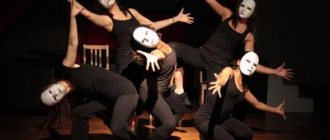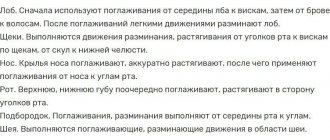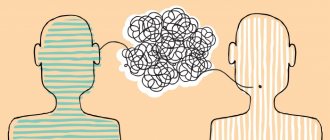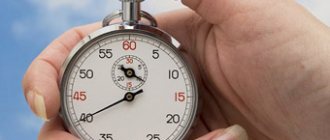Man is such an interesting creature that all manifestations of his essence, personality and feelings are perceived with interest. Facial expressions, for example, can tell a lot of interesting details about people, even if they themselves are silent. Gestures can also reveal someone else’s state. By observing people, you can learn many interesting details that will help you understand the truth or lies, emotions, mood and other characteristics of those around you. The psychology of facial expressions is truly extensive. To study it fully, one article or even a book is not enough. Nevertheless, some rules and tips will help you learn at least basic psychological “tricks” for use in the future.
General information and definitions
Physiognomy is the art of reading a person by his external signs, in particular by his face, his expression, features and facial expressions. You can determine both internal qualities and some psychological data, as well as health status. This method cannot be called completely scientific, but many are very seriously interested in it due to its certain validity. Facial expressions are facial expressions in which a person reveals his inner sensations, experiences, feelings, mood, emotions and other spiritual qualities. Gestures are body movements, most often with the hand/hands, that accompany or replace the words of the individual performing them. Posture is the position of the body. A person sits, stands or lies the way he likes/convenient/comfortable.
Gestures, postures, facial expressions - all this plays an important role in people's lives. Not a single person can live without them, and therefore, if you learn to recognize them correctly, life will become easier and more interesting. Facial expressions and gestures in communication are used everywhere and automatically; not everyone is able to control them. Thanks to this, more observant and attentive individuals have the opportunity to study people.
LiveInternetLiveInternet
“Gesture is not a movement of the body, but a movement of the soul”
Under the influence of the feelings experienced by a person, coordinated contractions and relaxations of various facial structures are born, which determine the facial expression that perfectly reflects the emotions being experienced.
Since it is not difficult to learn to control the state of the facial muscles, they often try to mask or even imitate the display of emotions on the face: The Theory of Lies
The sincerity of human emotions is usually indicated by symmetry in the display of feelings on the face, while the stronger the falsehood, the more the facial expressions of its right and left halves differ.
Even easily recognizable facial expressions are sometimes very short-lived (fractions of a second) and often go unnoticed; To be able to intercept it, you need a lot of practice or special training. At the same time, positive emotions (joy, pleasure) are recognized more easily than negative ones (sadness, shame, disgust). A person’s lips are particularly emotional, and they are not difficult to read: for example, increased facial expressions or biting of lips, for example, indicate anxiety, and a mouth twisted to one side indicates skepticism or ridicule.
Smile
A smile on the face usually shows friendliness or a need for approval. A smile for a man is a good opportunity to show that he is in control of himself in any situation. A woman's smile is much more truthful and more often corresponds to her actual mood. Since smiles often display different motives, it is advisable not to rely too much on their standard interpretation:
- excessive smiling - need for approval;
- a crooked smile is a sign of controlled nervousness;
- a smile with raised eyebrows - readiness to obey;
- smiling with lowered eyebrows - showing superiority;
- a smile without lifting the lower eyelids is insincerity;
- a smile with constant widening of the eyes without closing them is a threat.
Typical facial expressions that communicate emotions are:
- joy: the lips are curved and their corners are pulled back, small wrinkles have formed around the eyes;
- interest: eyebrows slightly raised or lowered, while eyelids slightly widened or narrowed;
- happiness: the outer corners of the lips are raised and usually pulled back, the eyes are calm;
- surprise: raised eyebrows form wrinkles on the forehead, the eyes are widened, and the slightly open mouth has a rounded shape;
- disgust: eyebrows are lowered, the nose is wrinkled, the lower lip is protruded or raised and closed with the upper lip, the eyes seem to be squinting; the person seems to be choking or spitting;
- contempt: the eyebrow is raised, the face is elongated, the head is raised as if a person is looking down at someone; he seems to distance himself from the interlocutor;
- fear: the eyebrows are slightly raised, but have a straight shape, their inner corners are shifted and horizontal wrinkles run across the forehead, the eyes are widened, with the lower eyelid tense and the upper one slightly raised, the mouth can be open, and its corners are pulled back, stretching and straightening the lips above the teeth (the latter just speaks of the intensity of the emotion...); when only the mentioned position of the eyebrows is present, then this is controlled fear;
- anger: the muscles of the forehead are shifted inward and downward, creating a threatening or frowning expression in the eyes, the nostrils are widened and the wings of the nose are raised, the lips are either tightly compressed or pulled back, taking a rectangular shape and exposing clenched teeth, the face often turns red;
- shame: the head is lowered, the face is turned away, the gaze is averted, the eyes are directed downwards or “run” from side to side, the eyelids are covered and sometimes closed; the face is quite flushed, the pulse is rapid, breathing is intermittent;
- grief: eyebrows are drawn together, eyes are dull, and the outer corners of the lips are sometimes slightly lowered.
Knowing facial expressions during various emotions is useful not only for understanding others, but also for carefully practicing (usually in front of a mirror) your working imitations.
Look and eyes
His eyes openly speak about a person’s inner experiences - it’s not for nothing that experienced “players” try to hide their expression behind the glasses of dark glasses.
People are usually extradited:
- any changes in the usual expression of the eyes - the emergence of a certain emotion, a signal of response to a stimulus;
- involuntary eye movements, noticeably “shifty eyes” - anxiety, shame, deception, fear, neurasthenia;
- a brilliant look - fever, excitement;
- glassy look - extreme weakness;
- enlarged pupils - a feeling of interest and pleasure from information, communication, photography, a partner, food, music and other external factors, acceptance of something, but also severe suffering;
- constriction of the pupils - a surge of irritation, anger, hatred, initial negative emotions, rejection of something;
- chaotic movements of the pupils are a sign of intoxication (the more such movements, the drunker the person);
- increased blinking - excitement, deception.
People always prefer to look at those they clearly admire, or those with whom they have close relationships, from a close distance; Women show more visual interest than men.
During communication, they most often look into the partner’s eyes when they listen, and not when they speak, although, when carrying out suggestion, they sometimes use direct gaze into the eyes at the moment of speaking the dialogue.
A person who looks you in the eye for noticeably less than one third of the entire communication period is either dishonest or trying to hide something; the one who openly persistently peers into your eyes, experiences increased interest in you (pupils are dilated), shows outright hostility (pupils are constricted) or strives to dominate.
Modifications of eye contacts have the following meaning:
- absent look - concentrated thinking;
- shifting your gaze to surrounding objects and to the ceiling - loss of interest in the conversation, an excessively long monologue of the partner;
- persistent and intent gaze into the eyes (pupils constricted) is a sign of hostility and a clear desire to dominate;
- persistent and intent gaze into the eyes (pupils dilated) is a sign of sexual interest;
- looking away and lowering your gaze - shame, deception;
- side view - distrust;
- the gaze then looks away, then comes back - lack of agreement, distrust.
Pose and its details
Significant information about a person’s internal mood is provided by the static position of his body. At the same time, a frequently repeated pose communicates stable personality traits.
Since during changes in feelings people usually control their face better than their body, it is often not facial expressions at all, but posture that can tell about an individual’s true experiences.
Possible connections between body positions and a person’s mental state are as follows:
- hands clasped behind the back, head raised high, chin pointed out - a feeling of self-confidence and superiority over others;
- the body is leaned forward, hands (akimbo) on the hips - self-confidence and readiness for active action, aggressiveness, nervousness when talking, the desire to defend one’s position to the end;
- standing with your hands on a table or chair - a feeling of incomplete contact with your partner;
- hands with elbows spread behind the head - awareness of superiority over others;
- putting your thumbs in your belt or in pocket slots is a sign of aggressiveness and demonstrated self-confidence;
- sticking your thumbs out of your pockets is a sign of superiority;
- crossed limbs - skeptical defensive attitude;
- uncrossed limbs and an unbuttoned jacket - establishing trust;
- tilting the head to the side - awakening interest;
- tilting the head down - a negative attitude;
- a slight tilt of the head back is a sign of aggressiveness;
- sitting on the tip of a chair - the readiness to jump up at any moment in order to either leave, or act in the current situation, or to calm the accumulated excitement, or to attract attention and join the conversation;
- crossing your legs over your legs and crossing your arms over your chest is a sign of “disconnecting” from a conversation;
- throwing your leg over the armrest of a chair (while sitting on it) - disdain for others, loss of interest in conversation;
- crossed ankles of a person sitting - holding back a disapproving attitude, fear or anxiety, an attempt at self-control, a negative defensive state;
- position (sitting or standing) with legs oriented towards the exit - a clear desire to stop talking and leave;
- frequent changes of posture, fidgeting in a chair, fussiness - internal restlessness, tension;
- standing up is a signal that a certain decision has been made, the conversation is boring, something surprised or shocked;
- clasped fingers - disappointment and the desire to hide a negative attitude (the higher the hands are located, the stronger the negative);
- the hands are connected by the fingertips, but the palms are not touching - a sign of superiority and confidence in oneself and in one’s words;
- hands rest with their elbows on the table, and their hands are located in front of the mouth - hiding their true intentions, playing cat and mouse with a partner;
- supporting the head with the palm of your hand - boredom;
- fingers clenched into a fist are located under the cheek, but do not serve to support the head - a sign of interest;
- resting your chin with your thumb is a sign of some kind of critical assessment;
- clasping your glass with both hands is a disguised nervousness;
- blowing smoke from a cigarette upward - a positive attitude, self-confidence;
- blowing smoke from a cigarette downward - a negative attitude, with hidden or suspicious thoughts.
Gestures and body movements
As a rule, a gesture communicates a person’s desire and what he is experiencing at that moment, and a gesture familiar to someone indicates a trait of his character.
Outwardly identical gestures from different people can mean completely different things, but there are also identical points:
- active gestures are a frequent component of positive emotions, understood by others as an expression of friendliness and interest;
- Excessive gesticulation is a sign of anxiety or insecurity.
When determining an individual’s thoughts and emotions, only involuntary gestures should be noted:
- showing open palms is an indicator of frankness;
- clenching of fists - internal excitement, aggressiveness (the stronger the fingers are clenched, the stronger the emotion itself);
- covering your mouth with your hand (or a glass in your hand) at the moment of speech - surprise, uncertainty in what is being said, a lie, a confidential message, professional insurance against lip reading;
- touching the nose or lightly scratching it - uncertainty in what is being communicated (both by oneself and by a partner), lying, searching for a new counterargument during the discussion;
- rubbing your eyelid with a finger is a lie, but sometimes - a feeling of suspicion and lies on the part of your partner;
- rubbing and scratching various parts of the head (forehead, cheeks, back of the head, ear) - concern, embarrassment, uncertainty;
- stroking the chin - the moment of decision making;
- fussiness of hands (fiddling with something, twisting and untwisting a pen, touching parts of clothing) - alertness, nervousness, embarrassment;
- pinching the palm - readiness for aggression;
- biting nails - internal anxiety;
- all sorts of hand movements across the body (adjusting a watch, touching a cufflink, playing with a button on a cuff) - masked nervousness;
- picking up lint from clothes is a gesture of disapproval;
- pulling a collar that is clearly in the way from the neck - a person suspects that others have recognized his deception, lack of air when angry;
- wiping the glasses or placing the frame of the glasses in the mouth - a pause to think, please wait;
- taking off glasses and throwing them on the table is an overly sensitive conversation, a difficult and unpleasant topic;
- extinguishing or putting aside a cigarette is a period of maximum stress;
- knocking ash off a cigarette too often - a painful internal state, nervousness;
- tilting the head to the side - awakening interest;
- a quick tilt or turn of the head to the side - a desire to speak out;
- constantly throwing away supposedly “interfering” hair from the forehead - anxiety;
- a clear desire to lean on something or lean against something - a feeling of difficulty and unpleasantness of the moment, lack of understanding of how to get out of the current situation (any support increases self-confidence).
Author: Evgeniy Sergeevich Pastykhov, candidate of physical and mathematical sciences, head of the external environment analysis department of the European Trust Bank.
Human gestures and facial expressions:
Interesting on the topic:
Body language: Gestures and facial expressions
A good face for the bad...
Eyes don’t lie... or how to recognize a lie from a person’s facial expressions and gestures
Face and facial expressions
What tells you best about a person? Of course, the face. It is this that is capable of giving away a person when he experiences some emotions, reacts to something, lies or tells the truth, etc. The language of facial expressions is rich and varied. It can be difficult to remember absolutely everything, but elementary features of sincere joy, for example, or disappointment can be retained in memory. And also learn to hide your own feelings. Despite the fact that human facial expressions and gestures are closely interrelated, they will be considered separately. So, let's go.
Reactions
Human facial expressions manifest themselves in different ways, and most often they can be seen in human emotions. The latter, in turn, are shown in reactions. Depending on their manifestation, you can find out what a person experiences from the information received. The difficulty is that some are afraid, others don’t want to, and still others are embarrassed to show their own emotions. Because of this, you will have to have time to notice the quick, involuntary reaction that appears very first. It is often almost impossible to completely control it, especially for an unprepared person. Therefore, you can determine the real feelings of your interlocutor, which he will most likely remove from his face in seconds, if you act quickly and extremely carefully.
Emotions
So let's continue. As mentioned just above, facial expressions in communication are manifested through the expression of emotions emanating from a reaction. Below are the most striking and significant of them, as well as ways of expressing them:
- Joy happiness. The eyebrows and lips are relaxed, the corners of the latter are raised on both sides, the cheeks are also raised, and there are small wrinkles in the corners of the eyes.
- Anger, irritation. The eyebrows are tense, brought together and lowered, the mouth is tightly closed. Often the teeth are brought together, as are the lips, the corners of which look down during anger or strong dissatisfaction.
- Contempt. Smirk. The corner of the mouth is raised on one side and a slight squint is visible in the eyes.
- Astonishment. The lips and face are generally relaxed, the eyes are rounder than usual, the eyebrows are raised up, and the mouth is slightly open.
- Fear. The eyebrows and upper eyelids are raised, and the lower ones are tense, like the whole face as a whole, the eyes are wide open.
- Sadness, disappointment. Slightly lowered upper eyelids and raised eyebrows, relaxed lips with corners looking down, as well as an empty, dull look.
- Disgust. The upper lip is tense and raised, the eyebrows are brought together, forming a small fold, and slightly lowered, the cheeks are also slightly raised, and the nose is slightly wrinkled.
Among other things, pictures will help you deal with emotions. The facial expressions on them are depicted well, which clearly demonstrates the inner feelings and experiences of the people depicted. Smiles, by the way, were also not invented in vain. Their facial expressions are often quite good, which is why they are in demand when trying to convey emotions via the Internet. After all, communication here mainly takes place in letters, which are not always able to convey the sensations experienced at one time or another.
Human condition
Sometimes it is enough to observe people a little to see what they are like. Facial expressions affect a person, and not only “one-time”, but for the rest of his life. The more clearly your interlocutor showed himself, the more you can find out about him. — Smart people most often have a large forehead. This does not mean that their knowledge is great in everything. Sometimes it happens that a person knows a lot of information in one area, but is completely ignorant in another. If your friend has a large forehead, but does not show any signs of special intelligence, perhaps he simply has not yet found his business.
— Brilliant eyes and a lively look mean that a person is passionate about someone/something. This usually happens to curious children who are interested in everything in the world. On the contrary, if a person’s gaze is dull and indifferent, it means that he is depressed, perhaps close to depression.
— If a lot of wrinkles appear in the corners of the eyes when laughing, this means that the person is kind, cheerful and cheerful.
— Bitten lips mean that a person likes to think and is most often nervous when making a decision. Sometimes people automatically begin to act this way right in front of their interlocutor, because they cannot decide something.
— A firm, developed chin (often square) shows a person’s strong will. Because people, when achieving their goals (even in an argument), tense the lower part of the face, it begins to develop. With frequent victories, the chin becomes strong and firm, which proves a person’s ability to achieve his goals. Based on this, if the lower part of the interlocutor’s face is soft, weak and undeveloped, it can be assumed that he is easy to break. He will not go to the end if a serious obstacle appears ahead.
— The more various bulges, irregularities, “hollows”, “protrusions”, etc. on the face (sunken cheeks, prominent cheekbones, for example), the more emotional and hot-tempered a person is. He can easily fall into a state of passion and vividly and vividly throw out his experiences on those around him.
Gesticulation
Both facial expressions and gestures in communication make it clear what and how a person says:
- Open palms signify trust and openness. If a person periodically exposes the inside of his hand to you, it means that he has nothing to hide from you, and he feels good in your company. If the interlocutor constantly hides his hands in his pocket, puts them behind his back, or makes other similar “secretive” movements, he is probably not very comfortable. This could be either dislike towards you or guilt/shame for past actions.
- Hands placed near the cheek mean thoughtfulness. Usually at such moments a person thinks intensely about something, tries to figure out what to do in a given situation, etc.
- When nervous or, more likely, lacking self-confidence, a person begins to touch either his neck or objects on it such as a pendant, chain, etc. In addition, he may begin to chew on the handle.
- A nod of the head signifies agreement. Sometimes people nod uncontrollably, thereby communicating on a subconscious level that they like someone else's opinion. Shaking your head, on the contrary, means that the person does not agree with you. Just like nodding, sometimes it happens automatically.
Personal space, communication areas
What kind of mood does a person have - types in psychology
To feel comfortable and free to use gestures, you need personal space. All people react differently to invasion of personal space. Anxious people tend to maintain a greater distance in communication. Confident individuals are less concerned about protecting their personal space. Aggressive people constantly try to expand their personal zone: their gestures are sweeping, and their poses are such as to take up as much space as possible.
Psychologists have calculated optimal zones for different types of interpersonal communication:
- An intimate area that involves physical contact. Its distance is from 15 to 45 cm. Only the closest people are at this distance.
- The personal zone is 75-120 cm. It is used in everyday communication with friends.
- Social zone – from 120 to 360 cm. At this level, official business communication is carried out.
- The public area is needed for lectures. Its level is 3.5-7.5 m.
Poses
Open facial expressions and gestures in communication are, of course, good, but we must not forget about the postures a person takes during a conversation:
- If a person sits relaxed, with his legs stretched forward, in your direction, this means that he is in a favorable mood. Approaching your interlocutor with a chair has the same meaning: a predisposition towards you personally and the conversation as a whole.
- Sometimes a person unfastens buttons, or even takes off clothes, such as a jacket. This proves his trust and open attitude towards you.
- If your interlocutor draws something simple on a piece of paper, often looks at one point, fiddles with a pen, shakes his leg, taps his fingers, does not express any special emotions, etc., it means that he is not very interested in you, because this signs of boredom. Change the topic of conversation or try to add liveliness to the dialogue.
- Crossed legs or arms (on the chest, for example) mean closedness, withdrawal, reluctance to communicate and open up. Perhaps the person simply feels uncomfortable, and this condition will soon pass, or perhaps it is unpleasant for him to be in your company.
How is surprise expressed in the lower part of the face?
When a person experiences this emotion, his jaw involuntarily opens. Dropping of the lower jaw leads to loosening of the dentition. The mouth becomes relaxed, his lips are in an open position. Such facial expressions of surprise are often referred to as “the jaw dropped,” since the mouth looks open as naturally as possible.
The degree of such openness may be moderate or significant. A slightly open mouth may show the upper incisors, but the greater the surprise, the more the tongue is visible. A dropped jaw may be the only sign of surprise on the face and demonstrate stunnedness. The stronger it is, the more likely the appearance of such characteristic sound combinations as “O-oh” or “Wow”.
To summarize, we can describe facial expressions of surprise as follows:
- eyebrows rise and bend, which tighten the skin of the upper eyelids;
- wrinkles of surprise gather on the forehead;
- the eyes are open as much as possible and show the sclera above the iris;
- the jaws open, exposing the teeth.
How to recognize truth and lies from a person
That’s why many people are interested in the details of our article - everyone wants to know how to read a person’s facial expressions, how to see when they are blatantly lying to you, and when they are telling the pure truth. Some ways to expose a liar are given below, but remember that, perhaps, the liar has known about such tricks for a long time, and therefore uses them skillfully and dexterously, deceiving others in such a way that a mosquito will not undermine his nose.
- When a person tells a lie, his pupils involuntarily constrict. If you have previously noticed the initial state of the interlocutor’s eyes, then you will understand that he is being disingenuous after the pupils become smaller.
- When a person lies, he looks away. This happens because he is subconsciously ashamed of the false information he says.
- When a person is lying and knows about the previous method, he looks intently into the eyes. Most often, he gets so “played” that he barely even blinks. This can also reveal a liar.
- The gaze of a lying person moves from one object to another, without stopping at one thing. Sometimes it's just a sign of nerves, but more often it's a sign of lies.
- Thanks to the compression of the zygomatic muscles, a kind of half-smile, half-grin appears on the face of the lying person.
- The direction of your gaze will also tell you whether you are hearing the truth or a lie from your interlocutor. If a person looks to the right, most likely, you are being presented with a lie, if to the left, the truth. However, this rule applies provided that the speaker is right-handed, otherwise read backwards.
Psychology of human behavior: manifestation of sympathy
Nonverbal contact between people is established with the help of images, facial expressions, and intonations. Body language is a great way to express feelings without words. Techniques, poses and gestures of falling in love have long been known. It is used by young and not very in love people to quickly achieve their goals.
Body language is of great importance when choosing a person to live with. Nonverbal signs of special enthusiasm are a sparkle in the eyes, dilated pupils and characteristic body movements. Behavior can help you understand a person's interest in romantic and intimate relationships.
Women bite their lips, shake their hair, twirl strands of hair around their fingers, touch their thighs and show off their wrists. As for the stronger sex, men subconsciously demonstrate their best qualities: they pull themselves up, trying to look taller, straighten their shoulders, straighten their shirt collar and tie.
Interest in romantic and intimate relationships is revealed by a sliding, examining gaze over the figure, lingering on open areas of the body. The poses of lovers and expressions of sympathy reveal their most intimate things, allowing them to trust each other limitlessly.
There is the easiest and fastest way to find a man using dating sites. I present to you the “Men Generator” course - the fastest dating, which has helped many find happiness in love.
Psychology: male body language and gestures
Man's body language and gestures
A man can make a strong impression on a woman if he knows how to play with body language and demonstrate natural strength. Well-known seducers thus achieve the affection of the female sex in a matter of minutes.
Don Juans are successful, using excellent tricks that can be compared to the mating games of birds and animals. When a man meets a beautiful woman, the pupils of his eyes dilate, his body turns and leans towards the “prey”, while the man scratches his chin, strokes his hair and thighs.
Slightly flared nostrils will tell you about your love intentions. Next to a woman, the seducer seems to lack air from an overabundance of feelings. Such gestures show true desires and intentions.
Nonverbal communication between a man and a woman
Body language and gestures of women
Reading women's body language is not difficult. They, unlike men, like to gesture more with their hands and use relaxed movements to make a lasting impression on a man. Men perceive this behavior in a way that suits them, drawing appropriate conclusions about women's signals.
Feminine tricks used to seduce men are supported by sexual poses: swaying hips, playing with curls of hair, deep voice, stroking legs and thighs.
When talking with a man, the lady tries to sit closer to him and leans forward. She looks straight into the eyes, crosses her legs and paints her lips in the presence of a man. Manifestations of sympathy are also noticeable when walking - the woman sways her hips, sticks her chest forward, and makes sharp movements with her head as she walks to push her hair out of her face.
What do hand gestures mean?
Sexual gestures of men
Men are characterized by erotic gestures:
- an intimate gaze slides over a woman’s body, as if undressing her;
- legs spread wide. Here the man is unconsciously displaying his genital area, an instinct in many primates;
- palms lie on hips;
- touches his neck with his hand, straightens his tie and shirt collar;
- when a woman appears, he straightens his shoulders, plays with his muscles, attracting the opposite sex;
- When sitting, he stretches his legs.
Healthy sex is a magical cure for all diseases! Take the “Healthy Sex” training kits by A. Mamatov, which include two valuable courses “Full Immersion” and “Foreplay”.
Sexual gestures of women
Women are characterized by erotic gestures:
- straightens her hair by touching her hair;
- tilts his head to the side;
- sways his hips while walking;
- crosses legs in a sitting position;
- strokes his thighs with his hand;
- shows wrists;
- leans confidently towards the man.
- flirtatious look, with a mysterious smile;
- slightly open mouth with wet lips;
- a quiet voice attracts sexual partners.
Women want to be forever young, beautiful and sexy! To avoid premature wear and tear of the body, in order to look older in photos of past years than in the reflection, take a “Leap into Youth.” Take advantage of Alexey Mamatov’s invaluable video course and look several years younger!
Common gestures of women in love
Features of foreign language of facial expressions and gestures
Not everywhere they communicate in the same ways as here. Of course, this does not mean human language, but the language of gestures, postures and facial expressions. The list below, indicating specific countries and incorrect actions, will help you avoid getting into trouble with foreigners. Asia. Watch your arms and legs. You should not be the first to touch someone else’s head and hair, because for Asians this is the most sacred thing in a person. The legs, in turn, also don’t need to be loosened, though not at all. Even an accidental touch (to any part of the body) can cause panic and even anger on the part of Asians. This is because, unlike the head, the legs are considered the “lowest” thing in the human body. Near East. Giving a thumbs up is the same as giving a person a punch in the ass. Children, however, often show this gesture, thereby trying to tease others. Brazil. The “everything is okay” gesture (the thumb is connected to the index finger, forming a zero, and the remaining fingers stick out “out”) here has approximately the same meaning as our middle finger. Venezuela. The “everything is okay” gesture here denotes homosexuality. Italy. The “Goat” gesture from rock music here signifies betrayal and failure. That is, if you show this sign to someone, you are hinting that you consider him a complete loser who is being cheated on by his other half. In northern Italy you are also not allowed to touch your chin, as this means you are giving the person the middle finger. Fiji. A handshake is considered a trademark of the republic, which is why you should not be afraid if the interlocutor holds your hand tightly and for a long time in his. This is just a sign of politeness, and it can really last a considerable amount of time, right up to the end of the conversation. France. The “everything is okay” gesture here denotes homosexuality, and scratching the chin is the same middle finger.
Gesture illustrators
“We don’t need words to understand each other.” You've probably heard this phrase. Usually they say this when people, knowing each other well, can do without words in their communication.
But there were times when verbal language simply did not exist and community members communicated using gestures.
This is interesting: Sex and marriage in the ancient world
But what is actually hidden behind such language today?
Subtle Gesture Signals
Does this mean that gestures, which replaced words in ancient times, have lost their meaning? Not at all. We continue to use them every day, sometimes without even realizing it.
For example, if you want to take an object in your hand, you involuntarily perform the action as if you were already holding it in your hand.
Other uncontrolled gestures are emotional: they more clearly convey the feelings you are experiencing. Talking about something with delight, you will involuntarily wave your arms, creating a feeling of a light, “floating” mood.
Such gestures can be called illustrative - since with their bright contrast they allow you to better perceive and remember a person’s speech.
People who belong to the group of kinesthetics can be called the most generous with gestures.
For you: Family traditions, 60 ideas +
They are more accustomed to exploring the world through touch, so gestures are the closest way for them to express their feelings and attitude to what is happening.
Gestures-symbols
This group includes gestures that can be called symbolic. It is with their help that we say goodbye or greet, ask for forgiveness, obey.
But be careful! In different countries, the same gesture can be endowed with the opposite meaning, so that, without meaning to, you can inadvertently offend your interlocutor. In an unfamiliar country, it is better not to use even the simplest gestures without clarifying their meaning. This will help avoid misunderstandings.
This group includes those gestures that are commonly called regulatory gestures. They kind of set the tone for communication.
The most typical gesture is a handshake. Which not only allows you to make an official greeting, but also gives the interlocutors the opportunity to better understand each other.
In order to more accurately understand the meaning of a handshake, do not forget about the cultural environment in which you are at a given time.











